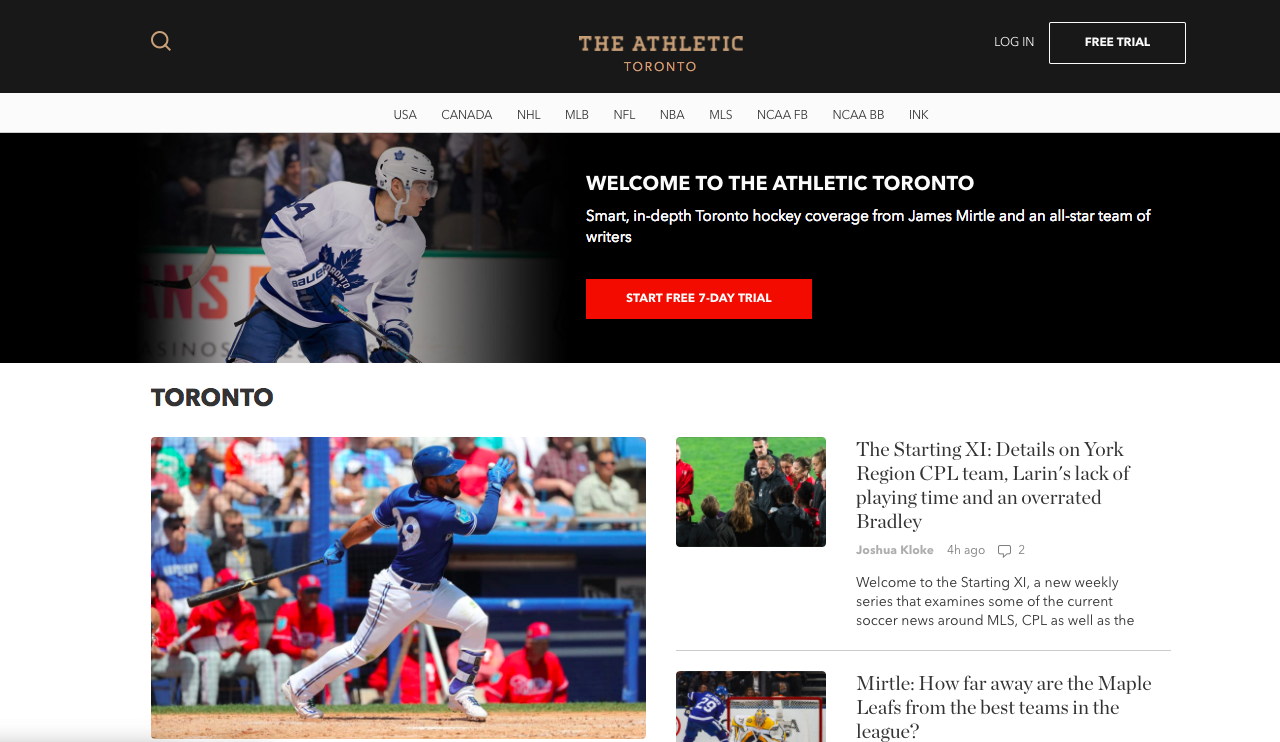When The Athletic, an American sports media startup, was looking to expand, the founders needed a city with the right mix. One that had a few sports franchises, hopefully performing respectably, and a passionate fan base.
They found that in Toronto.
The city is home to nine professional sports franchises, a rabid and large hockey fan base, and growing audiences for basketball, baseball and soccer. In 2017, the year The Athletic officially expanded across Canada, three of those franchises — Raptors, Maple Leafs and Toronto FC — made the playoffs.
Sean Fitz-Gerald was among the editors who got The Athletic off the ground. He started as managing editor at the organization in November 2016.
At an Online News Association event in Toronto in early February, he explained how The Athletic has built an audience in Canada — and converted that audience into subscribers.
Own your niche
Initially, The Athletic in Toronto did cover sports in the granular way many people have come to expect from a newspaper sports section or a sports TV network — every trade and game move had a story. “(We) found that didn’t stick well,” said Fitz-Gerald.
As a result, the editors moved away from the kind of daily reporting, and into work that takes time, but reaps rewards. Editorial can be divided into two groups: narrative features and advanced analytics analysis. The latter topic looks deeply at team and player statistics, and is generally reserved for hardcore sports nerds and fantasy league players.
Fitz-Gerald said they can cater to these niche interests. As a result, there is no set amount of stories to publish each week — they just work on quality editorial.
Twitter is king
It’s important to know where your audience already congregates. And for sports fans, that’s Twitter. Fitz-Gerald said that Twitter is a second screen for most fans during games, to vent about plays and calls. Teams already take advantage of this audience — Toronto Maple Leafs fans chat during games using #TMLtalk among other hashtags, and there is a strong fandom for the Toronto Blue Jays.
Facebook did not result in many conversions to subscriptions, said Fitz-Gerald, compared to Twitter, where The Athletic could plug into a network of sports fans.
Get into the real world
The first time The Athletic held an event in Toronto, the editors didn’t know what to expect. Turns out, a lot of readers wanted to meet them — they packed into a west-end Toronto bar. “I don’t want to say the name (of the bar) because I think it was a fire hazard,” said Fitz-Gerald.
They’ve since moved on to bigger venues, but the editors learned a valuable lesson about the importance of creating real life connections to readers.
Read the comments
Most journalists are scared to read the comments on their stories. Not so, at The Athletic. “The comments are wonderful,” said Fitz-Gerald.
You need a paid account to comment at The Athletic. The act of paying means that readers are really invested in the content. It helps that it is a subject that most of them are really passionate about.
“Here it’s a much more … we’ll say civil,” Fitz-Gerald said. People take time to think about what they are posting.
These strategies seems to be helping — The Athletic has shown no sign of slowing down. The Wall Street Journal reported in early March that the outlet had raised $20 million for expansion, and Richard Deitsch, based in Toronto, recently left Sports Illustrated to join The Athletic.
H.G. Watson was J-Source's managing editor from 2015 to 2018. She is a journalist based in Toronto. You can learn more about her at hgwatson.com.

